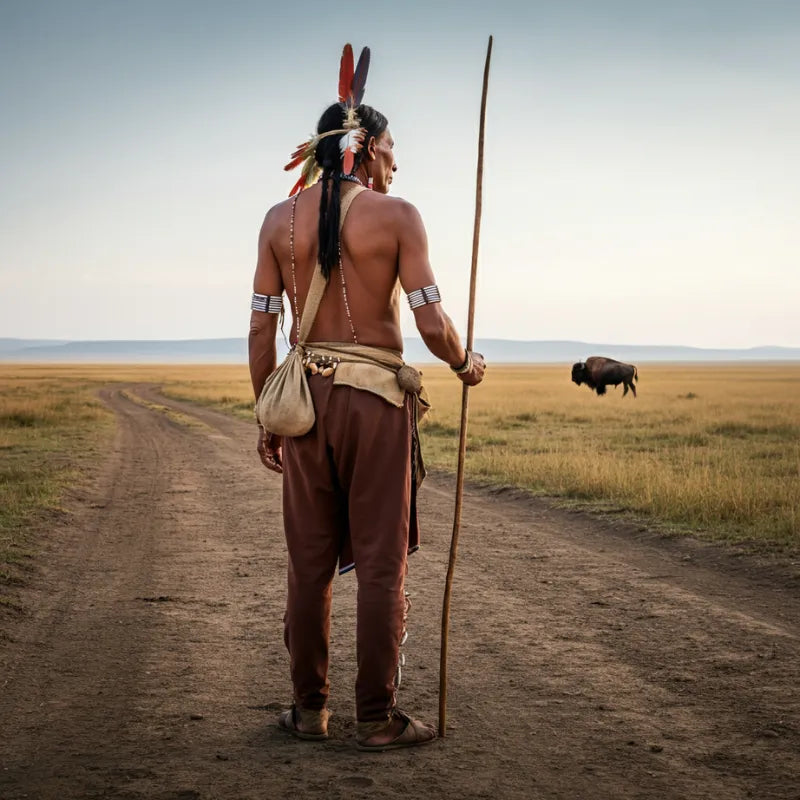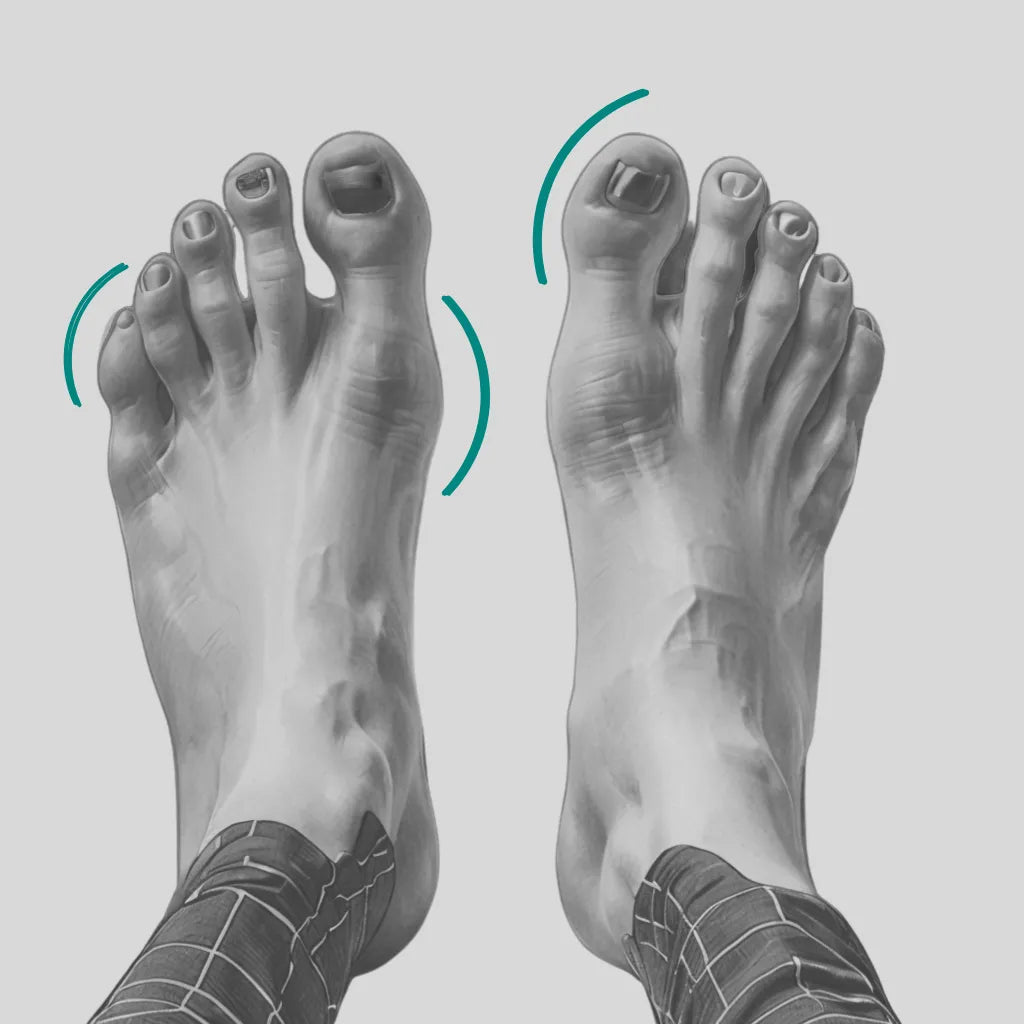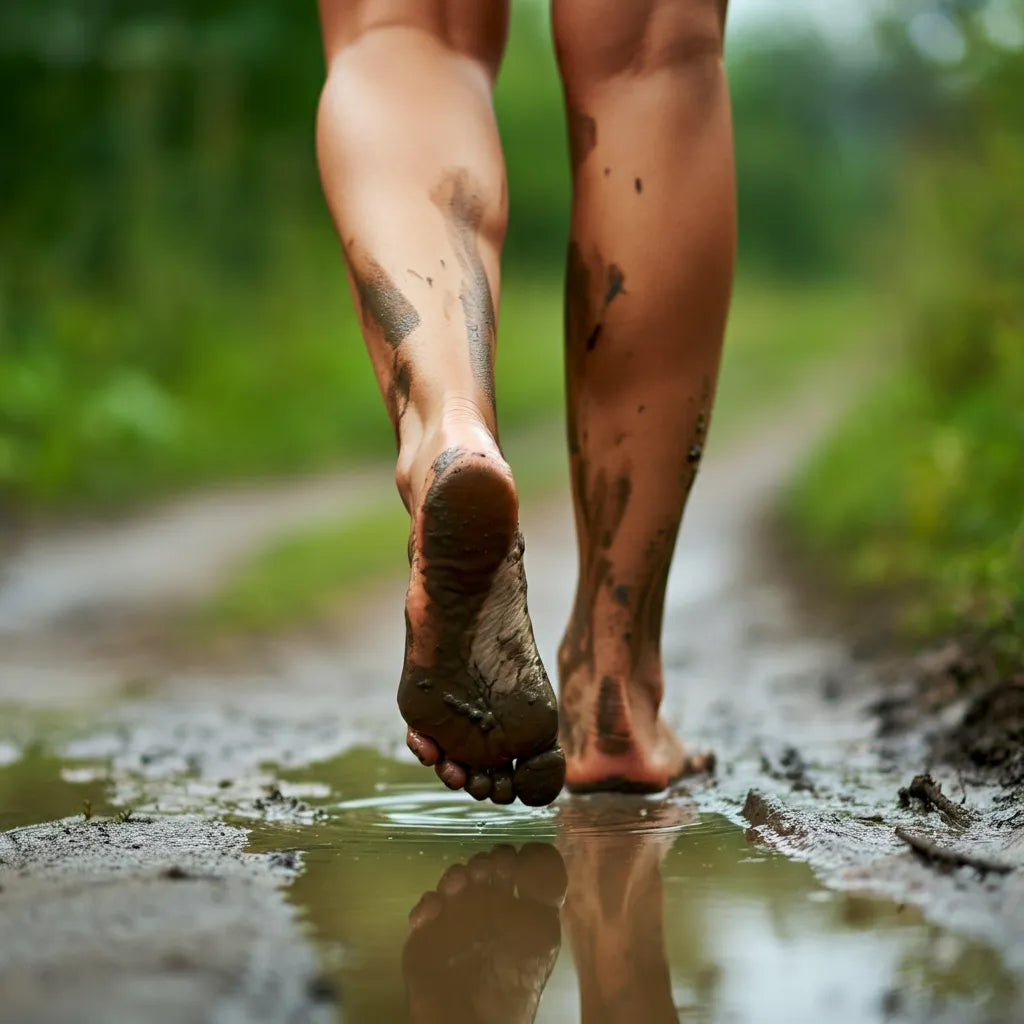
Ancient Steps, Modern Freedom
Walking barefoot is a timeless tradition that fosters a natural connection to the world while enhancing balance, posture, and overall well-being. This simple yet powerful practice reminds us of our roots and its relevance in modern life.

The Hidden Issues with Traditional Shoes
1.Damages to Your Foot Structure:Traditional shoes often interfere with the natural mechanics of our feet, leading to weaker muscles and reduced sensitivity over time. This can result in common foot problems like bunions, hammer toes, and a greater risk of injuries as we age.
2.Limitations of Modern Materials:Early footwear was simple, crafted from flexible materials like animal skins that allowed for natural movement. In contrast, modern shoes often rely on thick heels and rigid soles, which dull sensory feedback, restrict natural motion, and compromise foot strength, flexibility, and breathability.
Why are barefoot shoe features healthy?
Barefoot footwear or barefoot shoes offers a healthier, more natural option compared to typical shoes through the following features:
-

TOE SPACE FREEDOM
Provides ample space for your toes to splay naturally, preventing cramping and enhancing stability.
-

ZERO-DROP BALANCE
Ensures your toes and heels are on the same level, encouraging a natural, balanced posture.
-

THIN AND NATURAL
Offers a responsive, mobile sole that supports natural movement and strengthens stabilizing muscles.

Move Forward Naturally
The natural shape of your foot, with its widest point at the toes, plays a crucial role in supporting your body—from your knees and hips to your back and torso. Allowing your toes to spread and connect with the ground restores vital sensory feedback, helping you develop a healthy gait, improved balance, and natural movement.

Naturally Shaped Minimalist Shoes
At The Foot Freedom, our mission is to create shoes that align with the natural shape of your feet, using sustainable, high-quality materials whenever possible. Designed with a barefoot philosophy, our shoes are functional, versatile, grounding, comfortable, and stylish. They may look and feel different from traditional footwear, but once your body adapts, you’ll experience a level of freedom and comfort that will make you never want to go back.
For new barefooters
3 tips to get started
How Intensive Should My Training Be to Adjust to Barefoot Shoes?
The intensity of your transition will depend on your experience, but a gradual approach over several weeks is often the most effective.
- For Beginners or Those with Sensitive Feet: Start with light walks around your neighborhood. Listen to your body and stop before experiencing any discomfort or pain.
- For More Experienced Individuals: Begin with light jogs and develop a routine that challenges your feet without causing aches. The key is to ensure your feet feel exercised but not overworked.
No matter your level, allowing time for recovery is essential to ensure a smooth transition.
Can the Shoes Be Adjusted for Different Levels of Barefoot Feeling?
Absolutely! Our shoes are designed to adapt to your preferred level of barefoot experience. Whether you’re looking for more cushioning or a closer-to-ground feel, you can customize the fit and comfort to suit your needs.
What Exercises Can Help Strengthen Foot Muscles?
Regular stretching is crucial for reducing the risk of injury and maintaining flexibility.
Techniques such as foot rolling with a mobility ball can help loosen and relax foot muscles, complementing your barefoot training.






